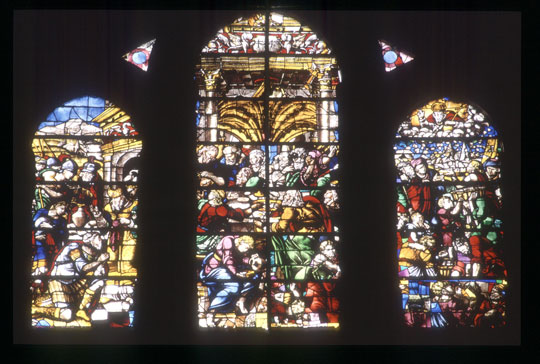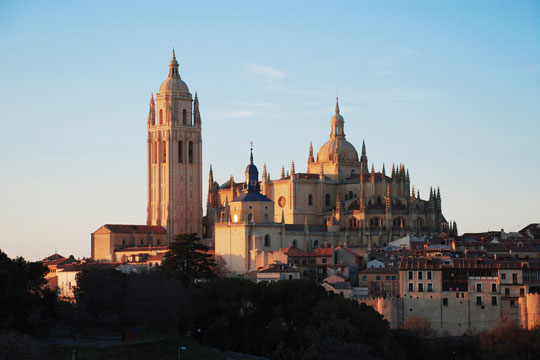Cathedral

The Lady of the Cathedrals
Its full name is the Cathedral of Nuestra Señora de la Asunción y San Frutos.
Following the late Gothic style, construction began in 1525 with the non-profit collaboration of Segovians, under the direction of the architects of the Gil de Hontañón family, but it was not consecrated until 1768.
This cathedral served as a substitute for the Old Cathedral, located opposite the Alcázar, which was destroyed in the War of the Communities in 1520.
On the exterior, facing west, is the main façade, known as the Puerta del Perdón, where there is a sculpture of the Holy Virgin by Juan Guas.
On the outside is the Enlosado, a paved space currently used as a stage for cultural activities.
The Gate of San Geroteo, named after the city's first bishop, opens to the south.
Facing north is the Puerta de San Frutos, built in honour of the city's patron saint in the early 17th century.
It has a floor plan with three naves and a dome-covered transept, designed by Pedro de Brizuela in the 18th century, with a semicircular apse at the chevet and ambulatory, surrounded by chapels.
The grandiose and harmonious dimensions define the interior spaces, with its beautiful 14th century stained glass windows, the choir, which conserves the Gothic stalls of the old cathedral, the 18th century Baroque organs, the collection of grilles and the pulpitum, which houses the relics of San Frutos.
Inside there are 18 chapels, decorated with important paintings and sculptures.
Some notable examples are the Romanesque Calvary inside the Chapel of the Sacrament; the triple painting by Ambrosius Benson and the altarpiece of La Piedad, by Juan de Juni, in the Chapel of the Holy Burial, next to the Door of San Frutos; and the Recumbent Christ by Gregorio Fernández.
The Cathedral Museum houses notable pieces of art by Pedro Berruguete, Sánchez Coello and Van Orley, and the Cathedral Archive conserves more than 500 incunabula, including the Synodal of Aguilafuente, the first book printed in Spain.
Painting Room under the Cloister
This room, with a surface area of 405 m², houses a careful selection of forty-two Flemish and Castilian paintings of great artistic and religious value.
It is a collection that enriches the understanding of the spiritual and cultural heritage linked to the Cathedral.
Cathedral Tower
The tower of Segovia Cathedral has established itself as one of the main architectural landmarks of the city. Since its opening to the public on 3 October 2014, it has offered Segovians and visitors alike the chance to take guided tours that provide a unique insight into the history and religious symbolism of the temple from a unique perspective.
Would you like to visit it?
- Check opening times and prices here.


